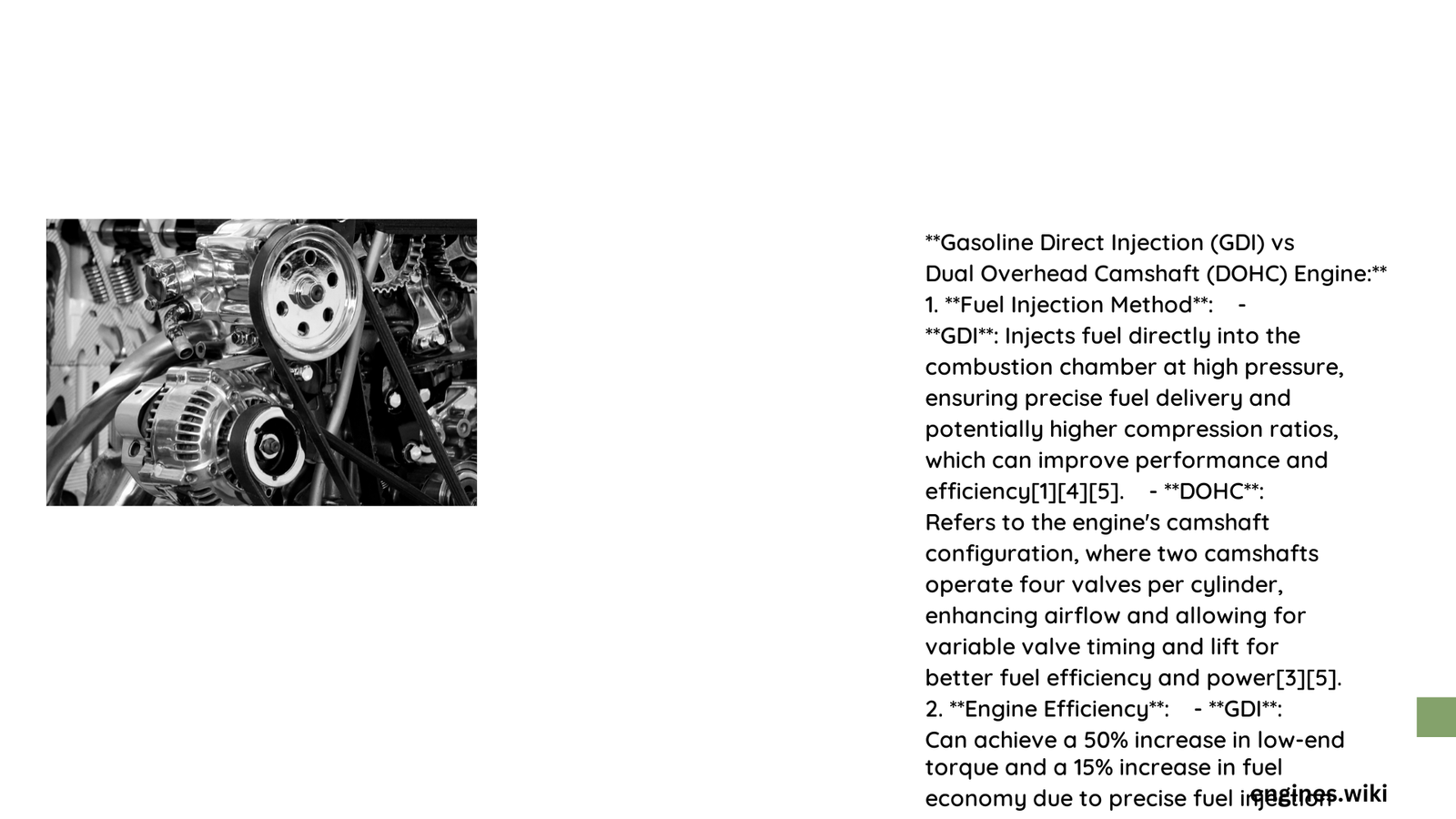Difference Between GDI and DOHC Engine: A Comprehensive Technical Overview
Modern automotive engineering presents two sophisticated engine technologies that significantly impact vehicle performance: Gasoline Direct Injection (GDI) and Dual Overhead Camshaft (DOHC) systems. While both technologies enhance engine efficiency and power, they operate through fundamentally different mechanisms. GDI focuses on precise fuel injection directly into combustion chambers, whereas DOHC concentrates on advanced valve train configuration, each offering unique advantages in engine design and performance optimization.
What Makes GDI and DOHC Engines Fundamentally Different?
Fuel Injection Mechanism: How Do They Differ?
GDI Engine Fuel Injection:
– Injects fuel directly into combustion chamber
– Operates at high pressures (100-200 bar)
– Enables smaller fuel droplet formation (<20μm)
– Allows higher compression ratios
DOHC Engine Fuel Injection:
– Typically uses port fuel injection
– Injects fuel into intake ports
– Lower injection pressures
– Standard compression ratios
| Feature | GDI Engines | DOHC Engines |
|---|---|---|
| Injection Location | Combustion Chamber | Intake Port |
| Pressure Range | 100-200 bar | 3-6 bar |
| Fuel Droplet Size | <20μm | 50-100μm |
| Compression Ratio | Higher (10:1 – 13:1) | Standard (9:1 – 11:1) |
What Performance Characteristics Distinguish These Engines?
Power and Efficiency Comparison
Performance Metrics for GDI Engines:
– Higher thermal efficiency (up to 40%)
– Improved fuel economy (15-20% improvement)
– Enhanced power output
– Lower emissions
Performance Metrics for DOHC Engines:
– Better valve control
– Increased engine rev capabilities
– More precise valve timing
– Improved volumetric efficiency
How Do Technological Advancements Impact Engine Design?
Advanced Engine Management Systems
GDI Technology Advantages:
– Precise air-fuel ratio control
– Advanced ignition timing management
– Variable valve timing integration
– Enhanced knock resistance
DOHC Technology Advantages:
– Independent intake and exhaust valve control
– Reduced valve train friction
– Improved engine breathing
– Potential for multiple valve configurations
What Are the Practical Implications for Vehicle Owners?
Maintenance and Long-Term Performance
GDI Engine Considerations:
– Potential carbon buildup risks
– Higher maintenance complexity
– More sophisticated diagnostic requirements
– Advanced sensor systems
DOHC Engine Considerations:
– More straightforward maintenance
– Lower carbon deposit tendencies
– Standard diagnostic procedures
– Proven long-term reliability
Technical Nuances: Beyond Basic Differences
Engineering Design Philosophy
While GDI represents a revolutionary approach to fuel delivery, DOHC embodies precision in valve train mechanics. GDI engines prioritize combustion efficiency, whereas DOHC systems focus on optimizing airflow and valve movement.
Conclusion: Technological Convergence
Modern automotive engineering increasingly sees hybrid approaches combining GDI’s injection precision with DOHC’s valve control, creating increasingly sophisticated powertrains.

